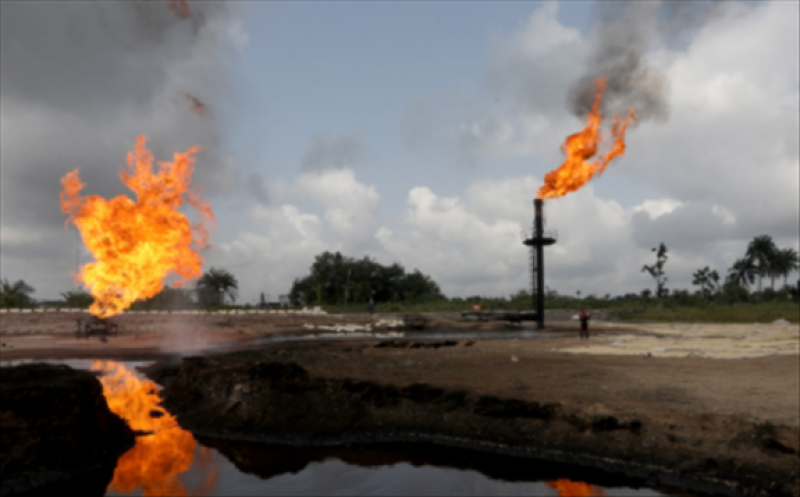It’s an unforgiving time to navigate the choppy waters of oil and gas investment. Demand destruction from the COVID-19 pandemic has eroded earnings, dented dividends and sent share prices plummeting. Large asset managers and banks face rising challenges from clients, shareholders and the public as the costly toll of climate change becomes increasingly evident. Today, license to invest in oil and gas along the value chain is becoming as much a question as license to operate.

Some investors have walked away from the sector altogether. But others see value to be gained from investing in companies with adaptive management teams. We believe this is a promising approach because beneath the industry’s monolithic veneer, there are material differences in the strategies and prospects of different firms in a decarbonizing world.
So how can an investor separate leaders from laggards?
Unfortunately, the byzantine world of ratings and rankings offers more riddles than insights. Columbia University research concludes that these tools are plagued by a lack of standardization and transparency, sometimes yielding bafflingly contradictory results. And EDF analysis demonstrates a chronic blind spot – ratings and rankings generally ignore a company’s lobbying record on climate change, despite the need for government action to address climate change’s systemic risk to the financial system.
To make matters more challenging, the adoption of net-zero pledges to 2050 remains uneven across the industry. And with the most notable exception of bp, even those with net-zero aspirations have not yet offered concrete strategies with near-term milestones that the market can digest and value. The fact is, the average oil and gas management team (and the average oil and gas investor) today is still more likely to make decisions for the next quarter, not the next quarter century. Meanwhile, there is no consensus on what’s needed right now.
Our advice to investors is to focus their engagement and decision-making on a short list of material environmental, social and governance (ESG) issues backed by clear, concrete metrics. A sharpened and consistent focus will send a powerful signal to management teams struggling to keep up with mixed messages and reporting fatigue. Individual investors and promising groups like Climate Action 100+ and the Net-Zero Asset Owner Alliance have key roles to play.
It’s the ideal time to build agreement on the five key outcomes for oil and gas to achieve in the next five years that are not only good for the environment but also for business and shareholder value. Here are our suggestions:
1. Eliminate methane emissions. The sector can and must solve the methane challenge by 2025. Companies that can’t keep natural gas, which is primarily methane, in the pipes should become un-investable. Self-reported, unverified emissions estimates based on paper exercises are barely worth the paper they’re written on. Instead, as the satellite age dawns, the key metric is methane intensity as verified and reported with actual measurement, as bp has committed to in recent weeks. For upstream, a target of 0.20% by 2025 backed by real emissions data is the gold standard.
2. Zero routine gas flaring. Routine flaring of natural gas, a practice as wasteful and unsightly as it is polluting, should be a thing of the past. The key metric is flaring intensity, which varies hugely across industry today. Operators like Pioneer, Chevron and Occidental have made good progress with targets, planning and good governance. A credible path to zero routine flaring by 2025 must be part of the price of admission to an investor’s equity portfolio or loan book.
3. Decarbonizing capital allocation. Deploying increasing capital to clean forms of energy can be a smart way to participate in parts of the energy sector that are anticipating exponential market growth, as opposed to the inevitable decline of fossil fuels. Time horizons matter, and long-term investors should orient to long-term, risk-adjusted returns through the energy transition. One key metric is investment in zero (or negative) carbon assets and initiatives as a portion of total investment. There is no magic number or one-size-fits-all approach here. But the number must be disclosed, and can be interpreted by investors in the context of a company’s strategy and alongside metrics including carbon intensity and absolute emission reductions.
4. Responsible lobbying. Top investors often express frustration to us about the reputational damage that trade associations chronically self-inflict. “Industry as its own worst enemy,” is a common investor complaint. It’s time for a trade association rethink. Industry executives should advocate forward-looking policies and help trade associations take corresponding policy positions, shifting the mindset from lowest common denominator to highest potential for progress. A key metric here is the number of trade associations companies fund that obstruct state, national, or international policy and regulatory action to reduce emissions and manage systemic risk. In other words -- change it, leave it, or withdraw funding from anti-climate lobbying activities.
5. Strengthened climate governance. Climate change and the energy transition present profound risks and opportunities to every oil and gas company. Important questions are in play that permeate every facet of a business – from strategic planning to operations, and investor relations to human resources. Strong board oversight and senior management accountability are essential, because the answers will determine companies’ success or failure. A key metric is whether boards take action to link executive compensation to science-based emissions reduction targets and scenario planning. Repsol, for example, has linked 40% of long-term bonuses for executives to Paris-aligned objectives.
The 2020’s are the defining decade, not only for oil and gas, but for the financiers who back an industry that has the potential to be part of the solution but just isn’t right now. The next breakthrough for the finance and energy sectors isn’t a more complicated model or longer disclosure form. It’s agreement by the financiers who matter most on the outcomes and metrics that matter most to accelerate tangible progress.